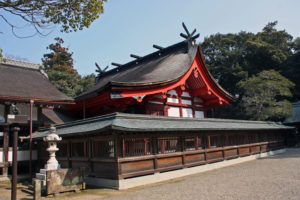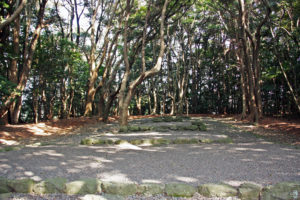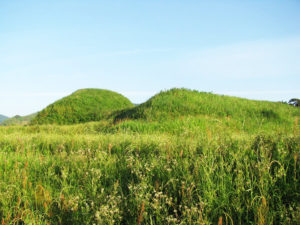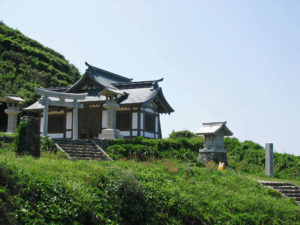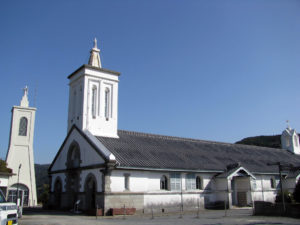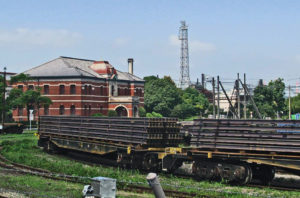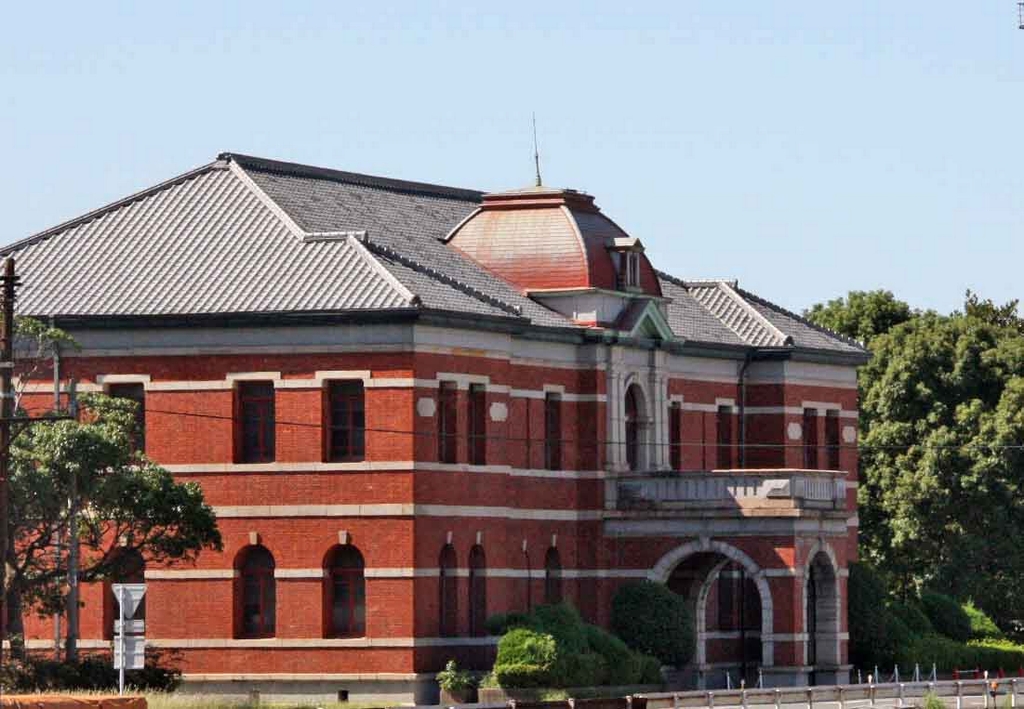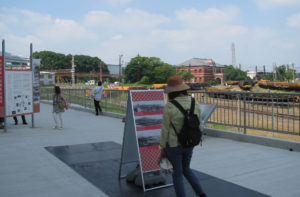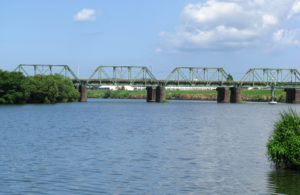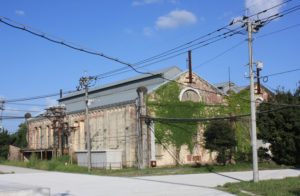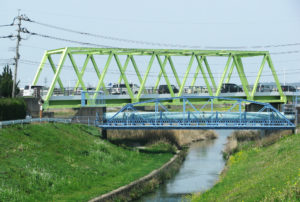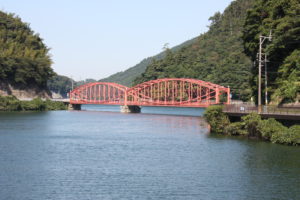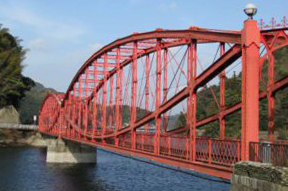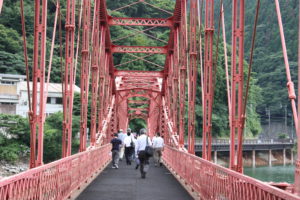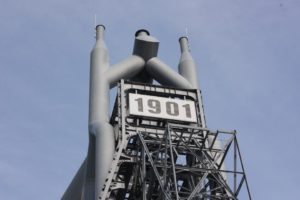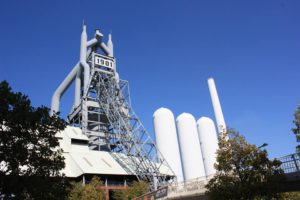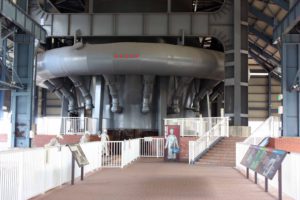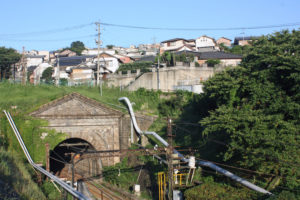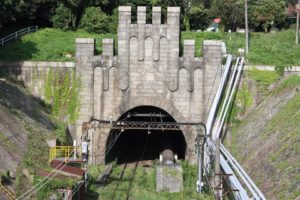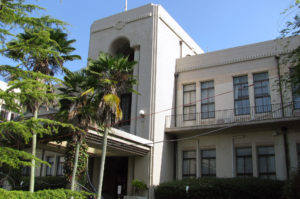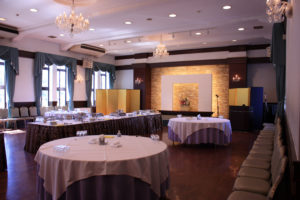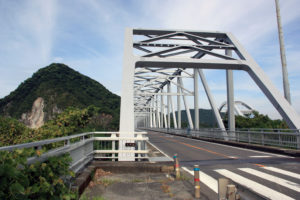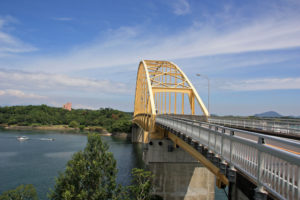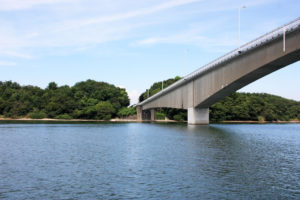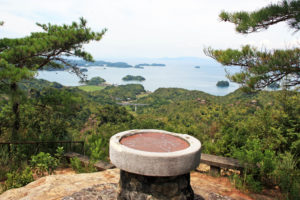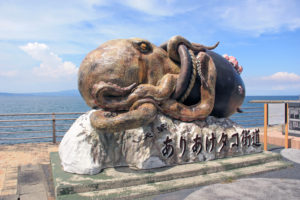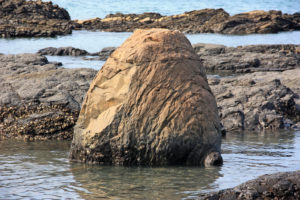UNESCO World Heritage / Sacred region Munakata
Sacred Island of Okinoshima and Associated Sites in the Munakata Region
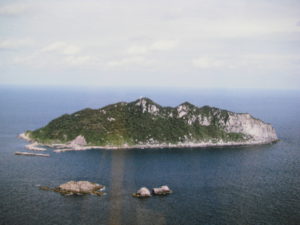 |
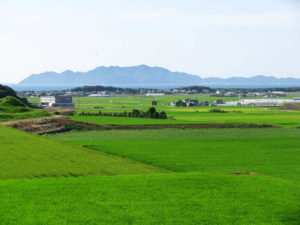 |
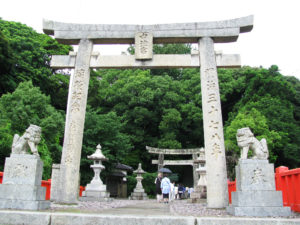 |
Ritual sites bearing witness to the successive phases of ancient rituals that chronicle the formation
of indigenous beliefs in Japan have survived to the present almost intact, because the island of
Okinoshima, as an object of worship, has been protected by established taboos strictly limiting
access to the island.
UNESCO World Heritage Sites
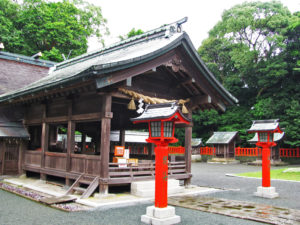 |
Nakatsu-gu, one of the three shrines that comprise Munakata Taisha, is situated on this island and enshrines Tagitsuhime-no-Kami, one of the Three Goddesses of Munakata. |
Munakata Shrine Okitsu-gu Yohaisho
UNESCO World Heritages in Kyushu
We have four UNESCO World Heritages in Kyushu.
Those sites are located all over Kyushu.
・ Sites of Japan’s Meiji Industrial Revolution registered in 2015
・ Hidden Christian Sites in the Nagasaki Region registered in 2018
・ The Sacred Island Okinoshiam and Associated site in the Munakata region registered in 2017
・ Yama, Hoko, Yatai, float festivals in Japan registered in 2016
Sites of Japan’s Meiji Industrial Revolution
Iron and Steel, Shipbuilding, and Coal Mining, are a grouping of historic sites that played an
important part in the industrialization of Japan in the Bakumatsu and Meiji periods. Location
of the site : Kitakyushu, Nakama, Saga, Omuta, Arao, Misumi, Nagasaki, Kagoshima.
 |
 |
 |
Hidden Christian Sites in the Nagasaki Region
Hidden Christian Site in Nagasaki Regions bear unique testimony to the tradition of people and
their communities who secretly transmitted their faith in Christianity while surviving in the midst
of the conventional society and its religions during the time of prohibition. Location of the sites
are Nagasaki, Shimabara, Hirado and Amakusa.
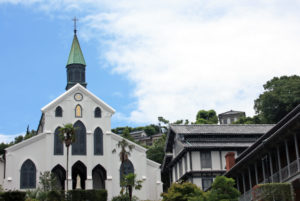 |
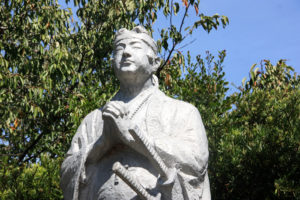 |
 |
The Sacred Island Okinoshiam and Associated site in the Munakata
The island of Okinoshima is located in the Genkai sea between Japan and Korea, As even
landing on the island has been prohibited, the strict taboos have preserved archaeological ritual
sites on the island almost intact over a millennium.In three shrines of Munakata Taisha, located
in the islands of Okinshima, Oshima and Kyushu. From Okitsu-miya Yohaisho on Oshima, we can
worship Okinoshima from afar. And Shimbaru-Nuyama Mounded Tomb Group is the evidence of
people who nurtured the tradition of worshipping the sacred island. Location of the sites are Munakata,
Fukutsu, and Oshima.
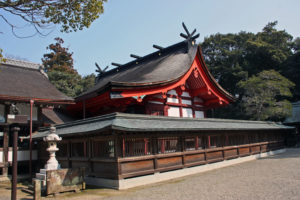 |
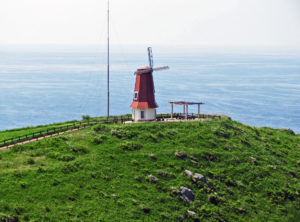 |
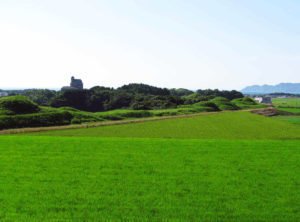 |
Yama, Hoko, Yatai, float festivals in Japan
In cities and towns throughout Japan, float festivals are held by communities annually to pray
to the gods for peace and protection from natural disasters. Location of the site : Kitakyushu,
Fukuoka, Hita, Karatsu, Yatsushiro.
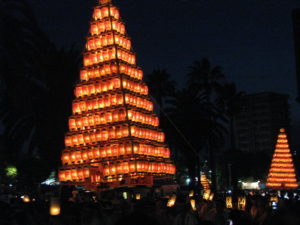 |
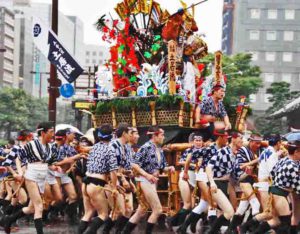 |
 |
Home Tailor-made tours Study tours Christian Pilgrimage tours Golf tour Kyushu tour packages
Christian Pilgrimage sites in Nagasaki Region, World Heritage Site
Japan’s unique practice of the Christian faith continued even during the ban on Christianity
Hidden Christian Site in Nagasaki Regions bear unique testimony to the tradition of people and
their communities who secretly transmitted their faith in Christianity while surviving in the midst of
the conventional society and its religions during the time of prohibition.
It was built in 1865 under the supervision of the French priest Bernard Petitjean. On March 17, 1865,
a group of peasants from Urakami came to the church and professed their faith to Father Petitjean,
thus revealing that Christianity had survived through the centuries of persecution. The white marble
statue of the Holy Mother at the entrance was built in commemoration of the dramatic discovery of the
“Hidden Christians.
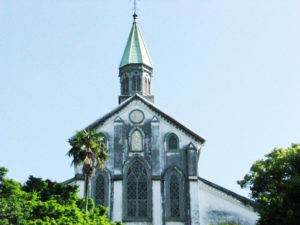 |
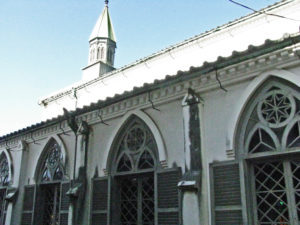 |
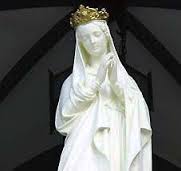 |
Martyrdom of the 26 Saints of Japan
Nishizaka Hill in Nagasaki is the place of Martyrdom of 26 Japanese Saints. The Twenty-Six Martyrs
of Japan were a group of Catholics who were executed by crucifixion on February 5, 1597.Their
martyrdom is especially significant in the history of the Catholic Church in Japan. In 1950, Pope Pius XII designated this place as an official pilgrimage site for Catholics. And Saint Teresa of Calcutta commonly
known as Mother Teresa visited here in 1982.
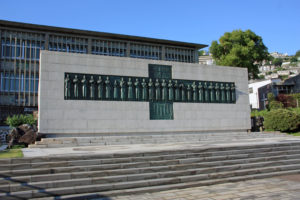 |
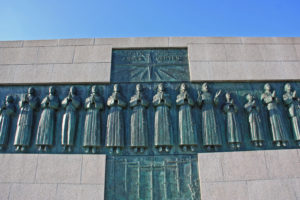 |
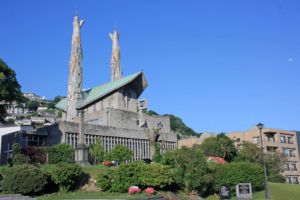 |
The mission base of de Rotz, who dedicated himself to assisting the needy When he discovered
the underground Christians, Petitjean realized that there were many other Christians hiding in the
Sotome region.
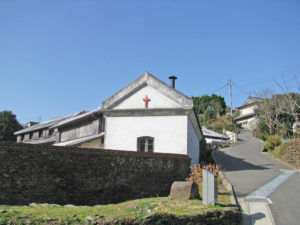 |
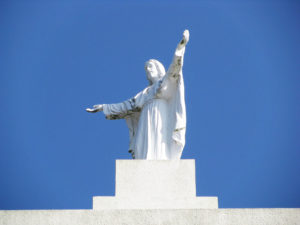 |
He appointed de Rotz as the parish priest of the Shitsu and Kurosaki districts. On an elevation
commanding a view over the Sea of Goto, he established a church at his own expense. The building
was extended and renovated again and again. A statue of Mary that he ordered from France is
standing in the bell tower.
Harajo Castle ruin is located in Minami-Shimabara-city and the Battle field of Shimabara Rebellion
which was a peasant uprising against bakufu’s persecution of Christians under the leadership of
Amakusa Shiro in 1637.
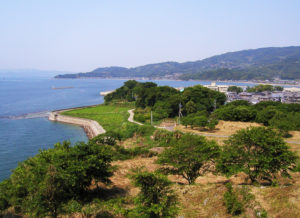 |
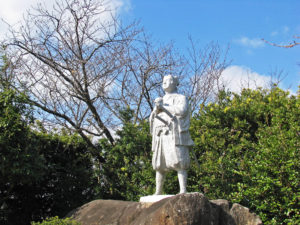 |
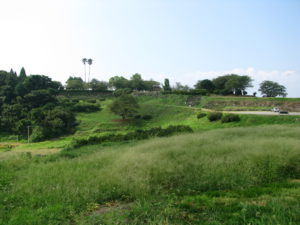 |
Jigoku, means Hell, is the number one attraction of Unzen with a peculiar smell of sulfur
emitted from the springs, and with white smoke rising from the ground over a wide area.
This is a striking reminder that Unzen Volcano is still very much alive.
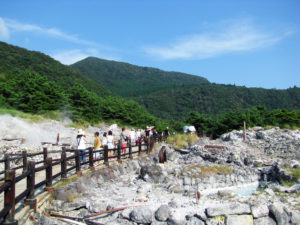 |
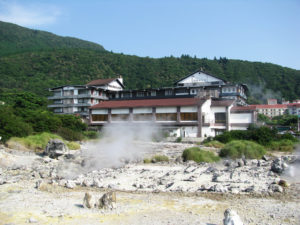 |
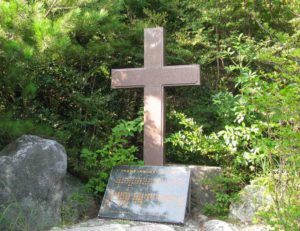 |
Unfortunately, this was once put into reality nearly 350 years ago during the time of religious persecution
in Japan. 30 Japanese Christians, failing to renounce their faith met their death here in the scalding
spring of Jigoku.
UNESCO / Sites of Japan’s Meiji Industrial Revolution
Iron and Steel, Shipbuilding and Coal Mining are a group of historic sites that played
an important part in the industrialization of Japan in the Bakumatsu during National
isolation period and Meiji periods, and are part of the industrial heritage of Japan.
The UNESCO World Heritages consist of eight areas with thirty component sites located
throughout Japan from Northern part Tohoku to Kyushu.
Kyushu has 5 areas with 16 sites as follows;
・Kitakyushu : 4 sites for Iron and Steel
・Miike (Omuta, Arao and Misumi) : 3 sites for Coal Mining
・Saga : 1 site for Shipbuilding
・Nagasaki : 5 sites for Shipbuilding and Coal Mining
・Kagoshima : 3 sites for Iron and Steel
The four sites of Yawata Steel Works in Kitakyushu area have been inscribed as Iron and Steel
Industry. The buildings of The Imperial Steel Works, Japan at Yawata Works NSSMC are the
surviving components of Asia’s first successful integrated iron and steel works: the State-run
Imperial Steel Works opened in 1901. It is located in the northernmost part of Fukuoka Prefecture,
the north end of Kyushu, 8 km south of Hibiki-Nada Seashore close to the continent of China.
Their present-day setting is still a working industrial landscape set in the southe-astern section of
NIPPON STEEL Yawata Works which, for over a century, has consistently maintained a leading
role in the Japanese steel industry. Now, NIPPON STEEL is one of the world leading steel
manufacturers.
 |
 |
 |
Miike
Miike Coal Mine, Railway and Port forms a Western-style linear coal mining landscape located
in the southernmost part of Fukuoka Prefecture and the northernmost part of Kumamoto Prefecture,
bordering the Ariake Sea to the west. The mines are situated in the relatively flat and low-lying area,
to the south of Omuta City and the north of Arao City which developed as industrial cities centred on
Miike Mine. Miike Coal Mine and transport infrastructure sites are physically linked and comprise.
 |
 |
|
The former (1858-71) ship repair and shipbuilding yard at Mietsu is one of Japan’s pioneer
Western style maritime facilities. Most of the site is located in the present-day Riverside Park,
Hayatsue, Kawasoe-machi, on the southern outskirts of Saga City, Saga Prefecture. The site,
much of it a buried structure, lies on the western bank of a 90° meander in the Hayatsue River,
a tributary channel of the Chikugo River near its mouth, just over 6 km north of the northern
shore of the Ariake Sea. Mietsu had been a mooring facility, with warehouses, since at least
the latter half of the eighteenth century and the Ofunate-Keikosho was expanded as a training
facility for operating Western style ships in 1858.
 |
 |
 |
The natural harbour and commercial city at the mouth of the Urakami River already had a long
history of interaction with Europe, China and Southeast Asia. Throughout the Japanese isolation
period (1639-1854) Dutch traders were the principal foreign power permitted to remain in Japan,
being confined to the tiny island of Dejima. In 1854, the Tokugawa Shogunate’s response to
Perry’s visit was to build a navy. They lifted the ban on building large ships and established the
Nagasaki Naval Training Institute and Nagasaki Foundry. Following on from the Shogunate’s
foundations, Mitsubishi’s shipyard turned out many of Japan’s greatest vessels. The company
also pioneered its undersea coal mines, the first to be developed with Western technology,
and which supported the global naval and commercial network of steamships operating in
East Asia and the Pacific.
 |
 |
 |
The site is located on the western side of Kagoshima (Kinko) Bay, formed from the collapsed Aira
volcanic caldera and dominated by the active Sakurajima strato volcano, and is backed by sheer
and wooded cliff faces traversed by narrow valleys. Shuseikan is a National Historic Site. Sengan-en,
the location and setting for the Shuseikan complex, was a garden created by the 19th Lord Mitsuhisa
Shimazu in 1658.
 |
 |
 |
UNESCO / Yama, Hoko, Yatai, float festivals in Japan
In cities and towns throughout Japan, float festivals are held by communities annually to
pray to the gods for peace and protection from natural disasters.
The element of Yama, Hoko and Yatai float festivals encompasses 33 representative
examples in various regions throughout Japan showcasing the diversity of local cultures.
Five Festivals in Kyushu are registered on the Intangible Cultural Heritage of Humanity
Tobata Gion Oyamagasa Festival
One of the most exciting summer festivals in Kyushu.
The festival has a lot of energy and is very dynamic as is the case with festivals such as the
Hakata Gion Yamagasa,with young men wearing the happi (festival costume) and hachimaki
(head band), carrying the Yamagasa (festival float) and walking around the town shouting
“yoitosa yoitosa”.
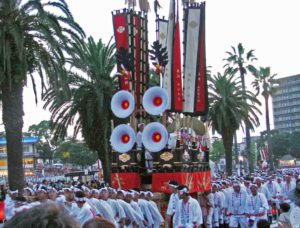 |
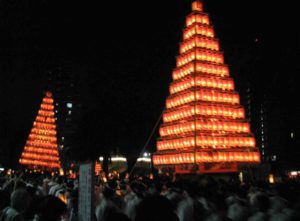 |
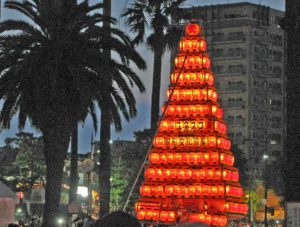 |
One of the most exciting summer festival in Japan
takes place from July 1 to 15 and is held at Kushida-jinja Shrine in Hakata.
There are two kinds of festival floats called Yamagasa. One is Kazari-yamagasa
with 15 meters high, a gorgeously decorated festival float which is decked with
elaborate dolls and castles.
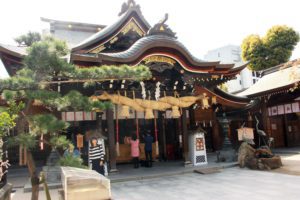 |
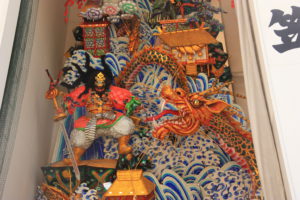 |
 |
Karatsu Kunchi Hikiyama Festival
Hita Gion Hikiyama Festival
Yatsushiro Myoken Festival
Industrial Heritages in Kitakyushu
Kitakyushu-city is the industrial innovation city where a lot of Japan’s Industries were born
and Japan’s industrial modernization has been achieved. The city presents various Industrial
Heritages including UNESCO World Herigate of Japan’s Meiji Industrial Revolution.
First Head Office of the Steel Works UNESCO World Heritage
Built in 1899, ahead of production facilities. It is an architectural fusion of Japanese and
European design, a two story red brick building with bilateral symmetry and a central dome
set in a Japanese tile roof.
|
World leading rails producing in the Steel Works |
First Head Office building registered on the World Heritage |
Observation deck of the World Heritage |
Onga River Pump Station, UNESCO World Heritage
Built in 1910 on the east bank of the Onga River. It served, and still serves, to deliver industrial
water to Yawata via an 11.4 km pipeline. This supply is integral to the steel production process
and was necessary to cope with the 1st phase expansion of the Imperial Steel Works.
|
Onga River |
Onga River Pump Station |
Water piping to the Steel Works |
The first-class civil construction heritage that triggered the registration of World Cultural Heritage of
Meiji Japan’s Industrial Revolution.Th e Kawachi Reservoir was constructed for the industrial water
supply to Yawata Steel Works.
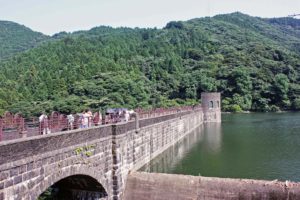 |
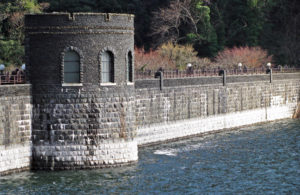 |
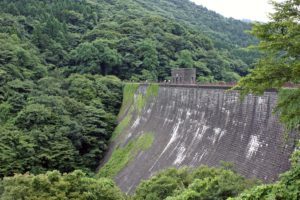 |
The Blast Furnace used to make the pig iron and was where Japan’s steel industry began in 1901.
It contributed greatly to the development of the Japanese steel industry and was used until 1972,
and has been preserved just as it was.
|
Indication of the year of Steel Works operation commencement |
Proper of Blast furnace, Hot Stoves and Stack |
Cast house floor, the pig iron is being discharged |
Dedicated railway for Yawata Steel Works
Connected between Yawata and Tobata. Construction work took three years, and completed in
1930. The most difficult and hard work was making Miyatayama tunnel with a total length of 1180m
due to suffering from floods. The gates of the Miyatayama tunnel are decorated with stately designs.
|
The rail way crossing the road |
Miyatayama tunnel Yahata side |
Miyatayama tunnel Tobata side |
Your equiry can be sent by selecting the Enquiry Form link below.
You can also contact us by e-mail at info@japan-kyushu-tourist.com
And we would love to chat about your travel plans on the phone as well,
please ring our office a call in English Tel : +81-93-521-8897
HOME About us Our Services Terms and Conditions
Amakusa / UNESCO Hidden Christian sites 2 days tour
Hidden Christian Sites in the Nagasaki Region
has been registered on UNESCO World Heritage in 2018, Japanese Christianity has a long
history of continuing faith while coexisting with Japanese traditional religion Shinto and General
society.
Japan’s unique practice of the Christian faith continued even during the ban on Christianity.
Hidden Christian Site in Nagasaki, Shimabara and Amakusa Regions bear unique testimony
to the tradition of people and their communities who secretly transmitted their faith in
Christianity while surviving in the midst of the conventional society and its religions during
the time of prohibition.
Amakusa is the birthplace of Amakusa Shiro who was the leader of Shimabara Rebellion occurred
in Shimabara in 1637.
And there are two World Heritage sites in Amakusa ; Oe Cathedral and Sakitsu Village.
The tour introduces how Christians have been continued their faith since Christianity was
propagated to Japan, by visiting Hidden Christian sites in Amakusa in Kumamoto-prefecture.
Location of Amakusa

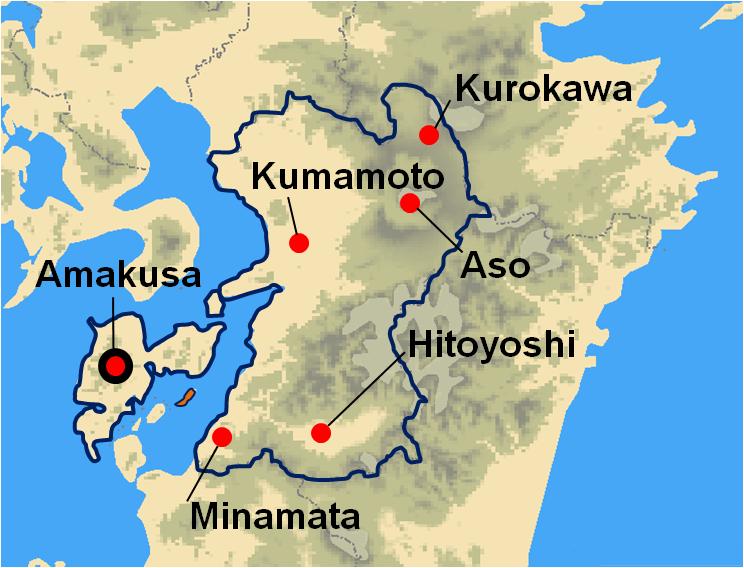
Tour conditions
The tour is the private tour exclusively for your group.
・Minimum number : 2 person
・Maxum number : 30 person
・Tour date : please specify the date
・Accommodations is selected as per your required grade, room conditions and budget
and the location is considered sightseeing, dinner and nightlife as well.
・English speaking tour attendant escorts your journey to produce a pleasant trip.
・Chartered vehicle is utilized as per number of person.
Day 1
Itinerary
8:00 Depart Fukuoka-city
Transfer to Amakusa via Kumamoto ( 3 hours )
Travel Amakusa Gokyo / Pearl line
Visit Amakusa Shiro Memorial Hall
Visit UNESCO World Heritage sites : Oe Cathedral , Sakitsu Village
Stay at Amakusa
Where to explore
Amakusa Gokyo or Amakusa five bridges, is a general term for five bridges which connects
from Misumi at the Udo peninsula to the Oyano island, the Nagaura island, Ikejima, Maejima,
and Amakusa Kamishima, was built in 1966. The area on the National road route 266 called
as the Pearl Line.
|
First Bridge
|
Second Bridge
|
Fourth Bridge
|
The theme Museum shows History of Christianity in Amakusa and Shimabara Rebellion in
Harajo Castle Ruins which was a peasant uprising agaist bakufu’s persecution of Christians
under the leadership of Amakusa Shiro in 1637.
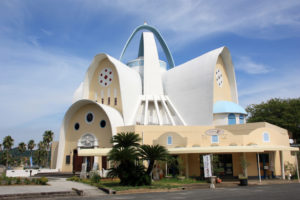 |
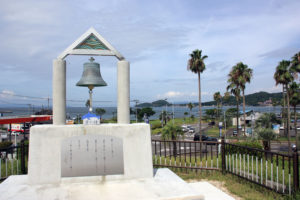 |
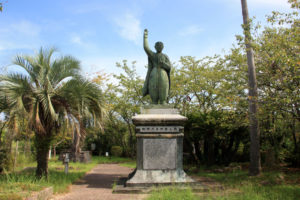 |
The oldest Catholic Church in Amakusa and was one of the first churches built right after the
ban on Christianity was lifted. The and Romanesque-style architecture and the chalky white
structure was rebuilt in 1933 by a French missionary priest named Father Garnier using his
own money and contributions from local Christians living in the area.
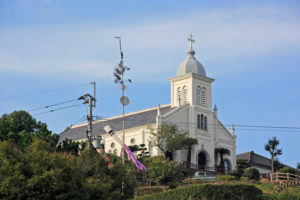 |
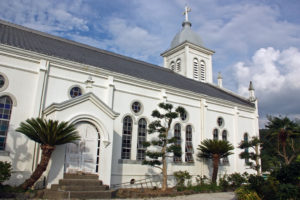 |
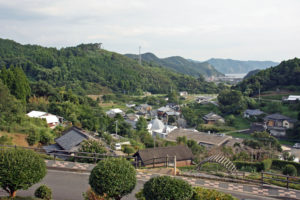 |
Sakitsu Village / UNESCO World Heritage
A Gothic-looking church is located on a cove of a fishing village. In 1934, a French priest
Augustin Halbout MEP purchased the premises of the former village headman and built a
wooden and concrete finished church, with Tetsukawa Yosuke’s design and construction.
He placed the altar at the very site where fumie or a test to ensure non-allegiance to
Christianity had been conducted.
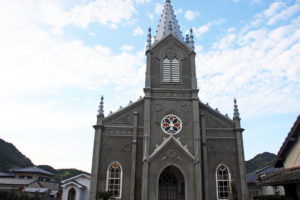 |
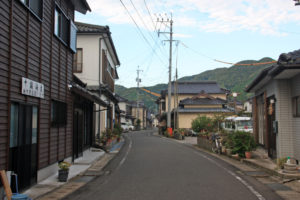 |
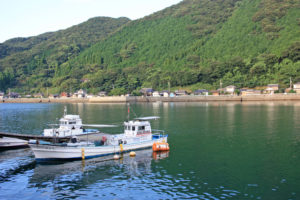 |
Day 2
Itinerary
Leave Hotel in Amakusa
Exploring Amakusa
Tomioka Castle Ruins , Matushima area
Transfer to Fukuoka-city
17:00 Arrive at Fukuoka-city
Where to explore
Tomioka Castle was built in 1602, one year after Terasawa Shimanokami hirotaka came to
Amakusa. Although Amakusa ruled by proxy for Terasawa from Tomioka Castle, he revelled
with his army in the Shimabara Rebellion in 1637. After the rebellion, Yamasaki Kainokami
Ieharu ruled from the castle, and which was restored and enlarged to its present form.
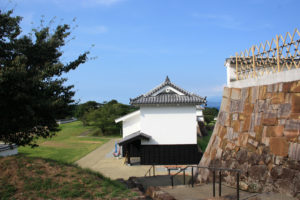 |
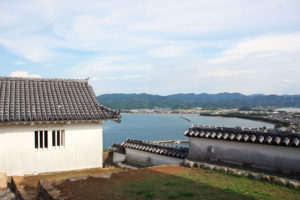 |
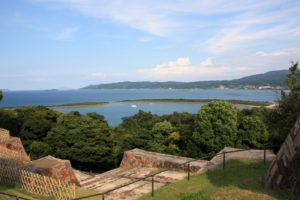 |
Connecting the islands of Amakusa with the inland of Kumamoto via the Uto Peninsula are
Amakusa Gokyo or Amakusa Five Bridge. You can enjoy the beautiful scenery of Amakusa
from the sea on a cruise.
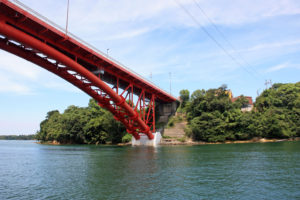 |
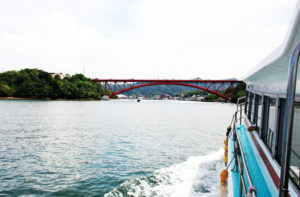 |
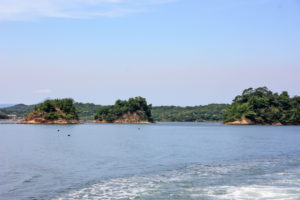 |
Exploring featured sites
|
Sengan moutain Observatory
|
Ariage Octopus Street
|
Oppai Stone or breast stone
|
Your equiry can be sent by selecting the Enquiry Form link below.
You can also contact us by e-mail at info@japan-kyushu-tourist.com
And we would love to chat about your travel plans on the phone as well,
please ring our office a call in English. +81-93-521-8897
Tour results
We are offering various types of tours, and the tour results up to now are shown links below.
Tailor-made tour Study tour Golf tour
Munakata Taisha Shrine Hetsu-miya
| Torii Gate | Stone Lantern | Pond at the approach |
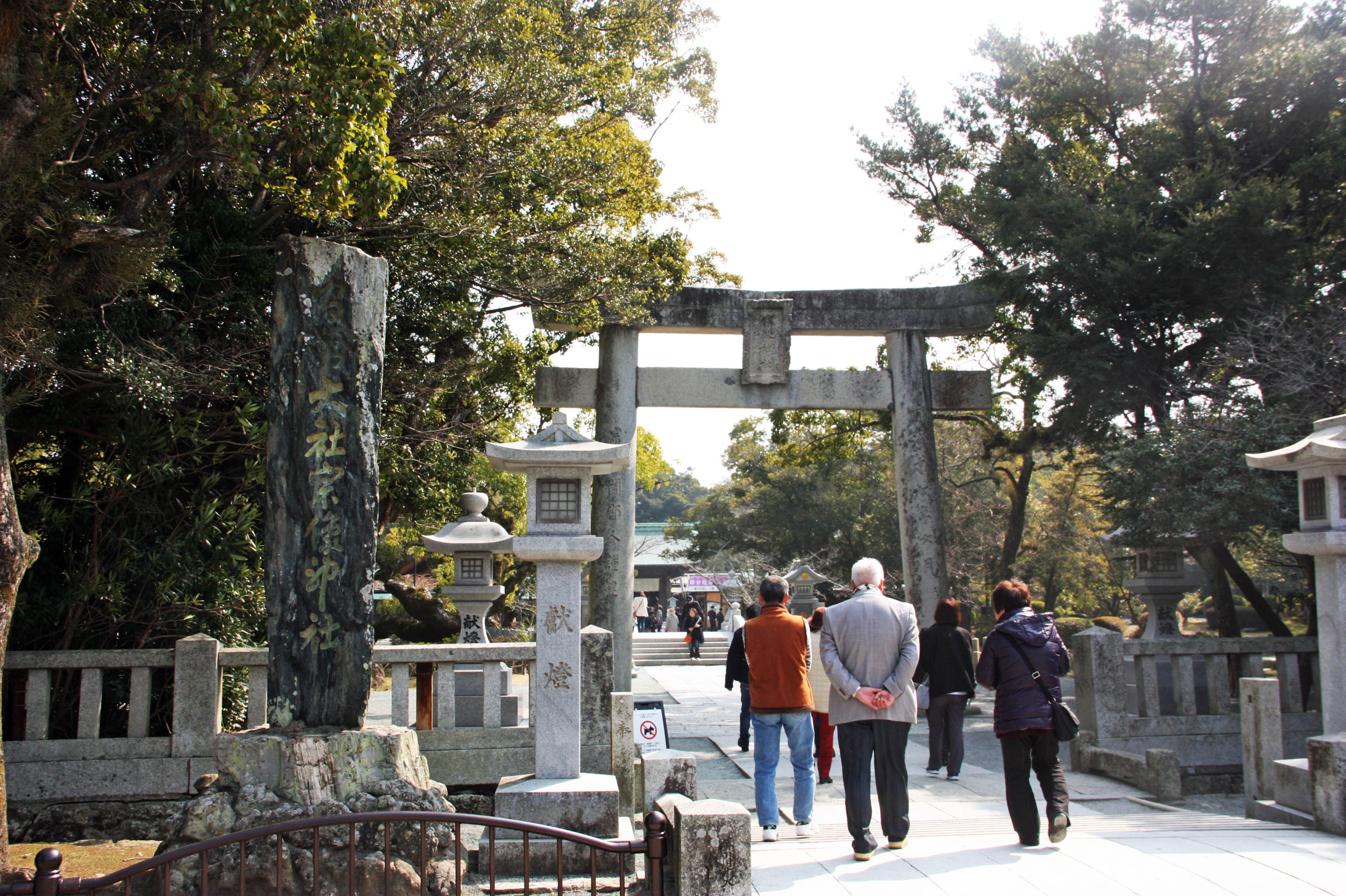 |
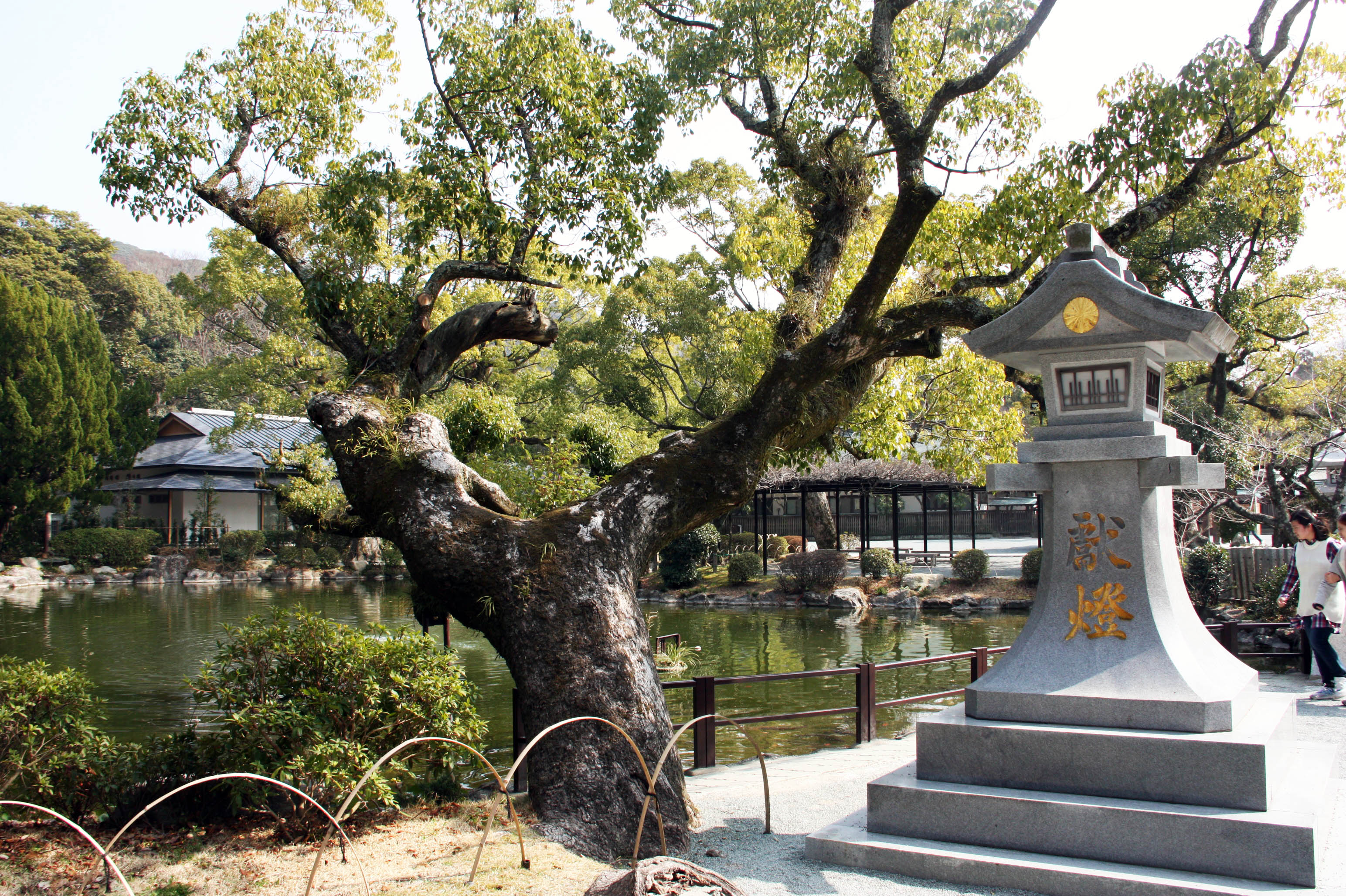 |
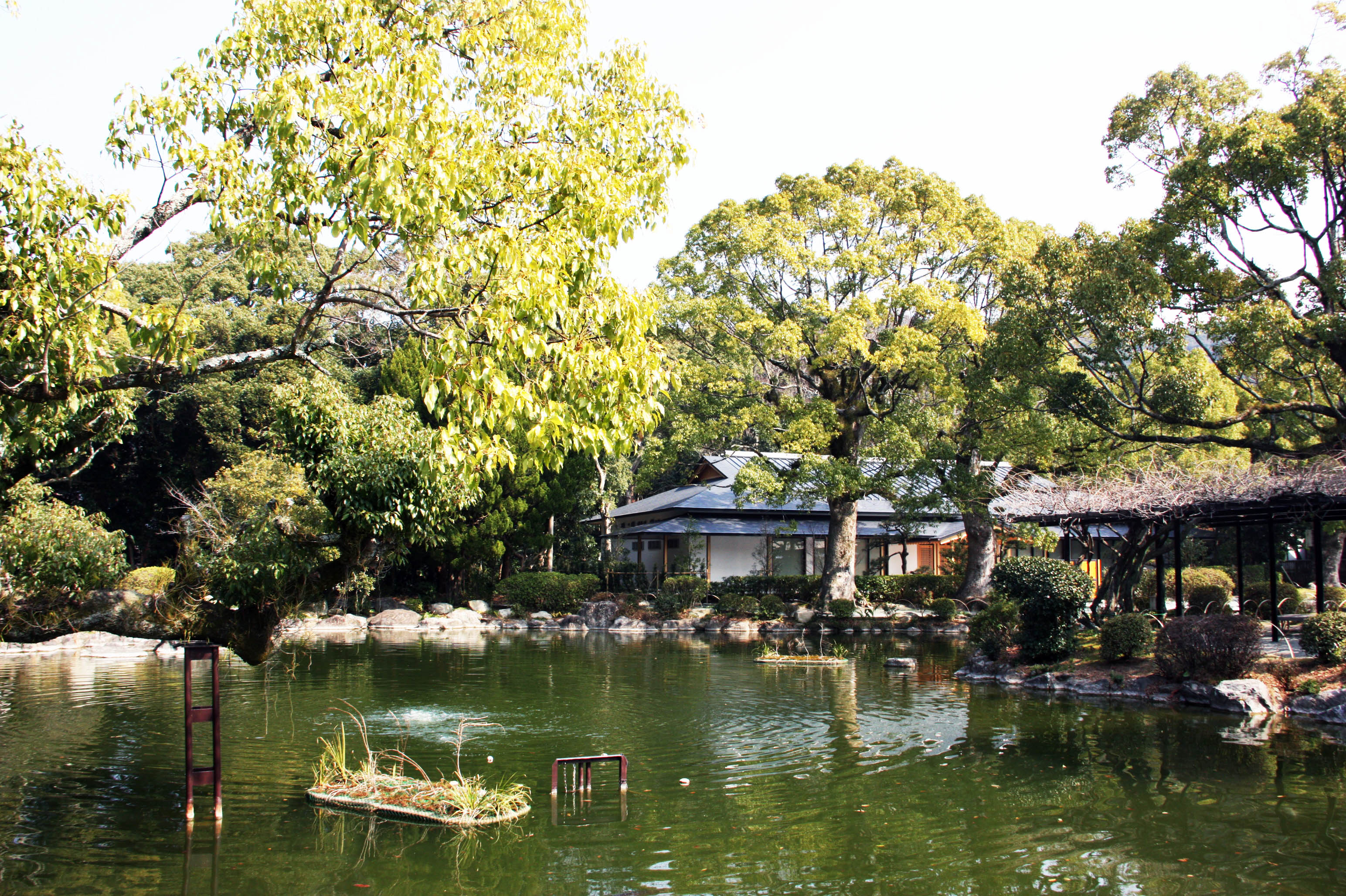 |
| Chozysha, pureification place | Main Gate | Imperial Chrysanthemum pattern |
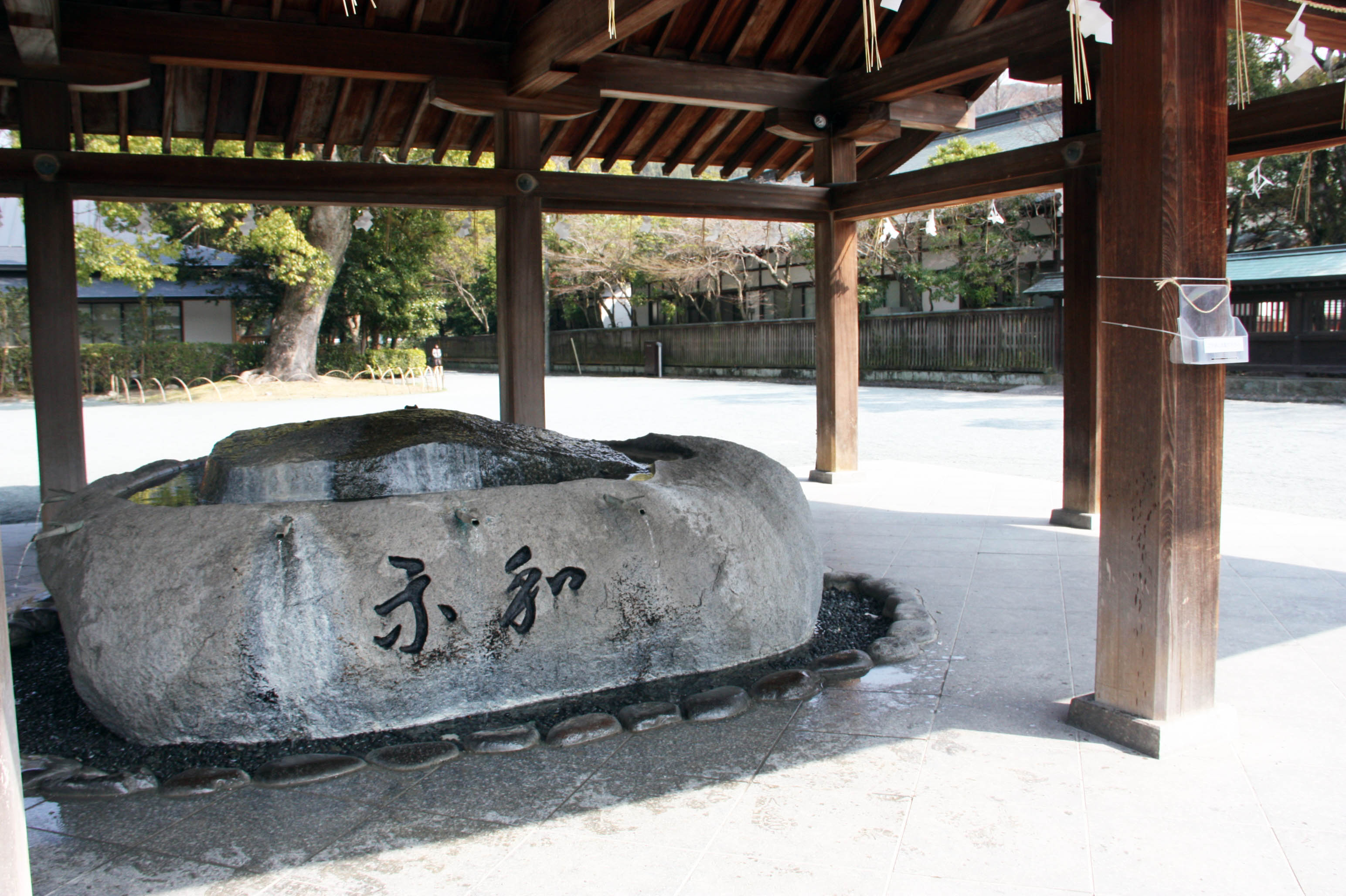 |
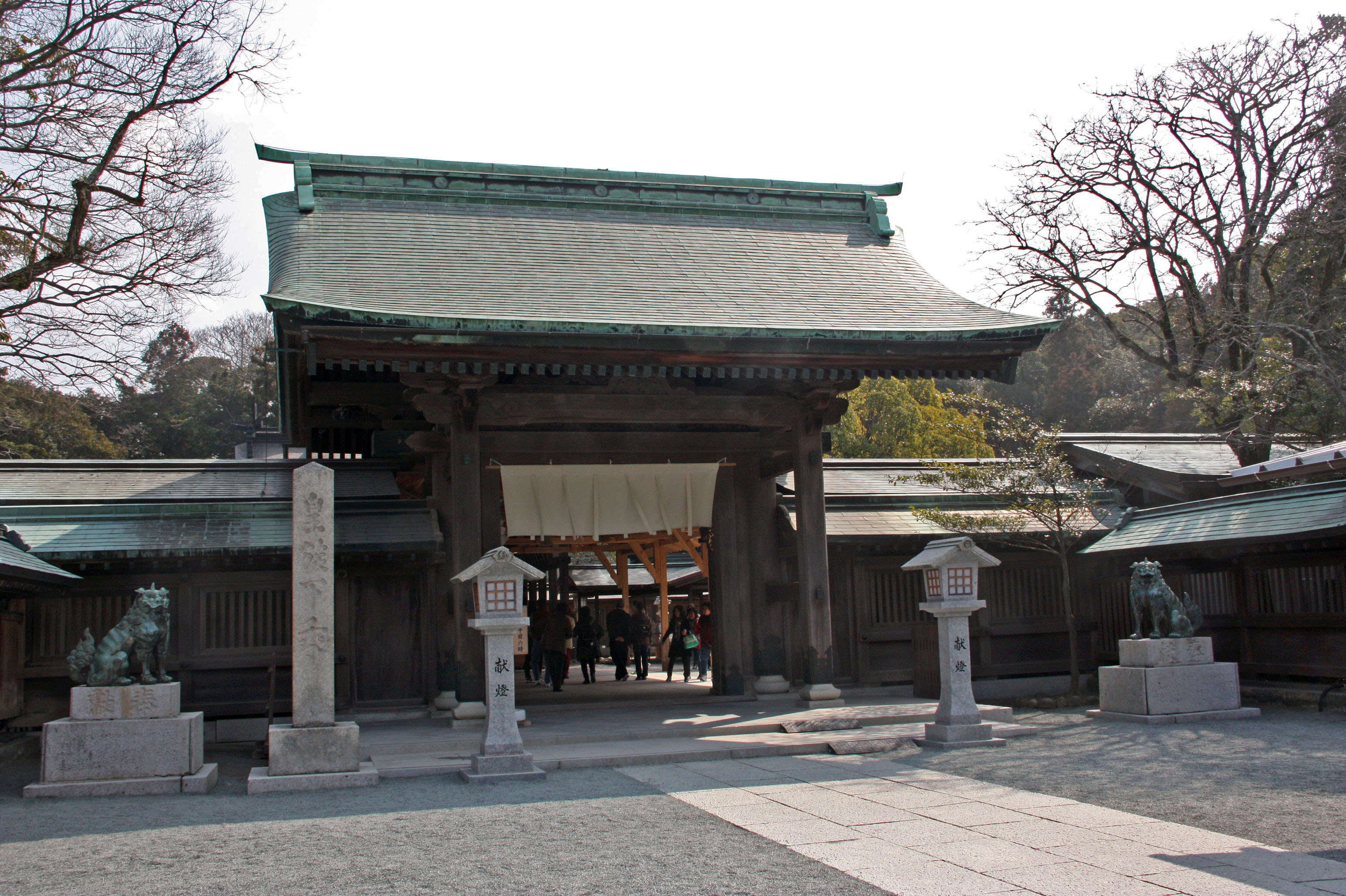 |
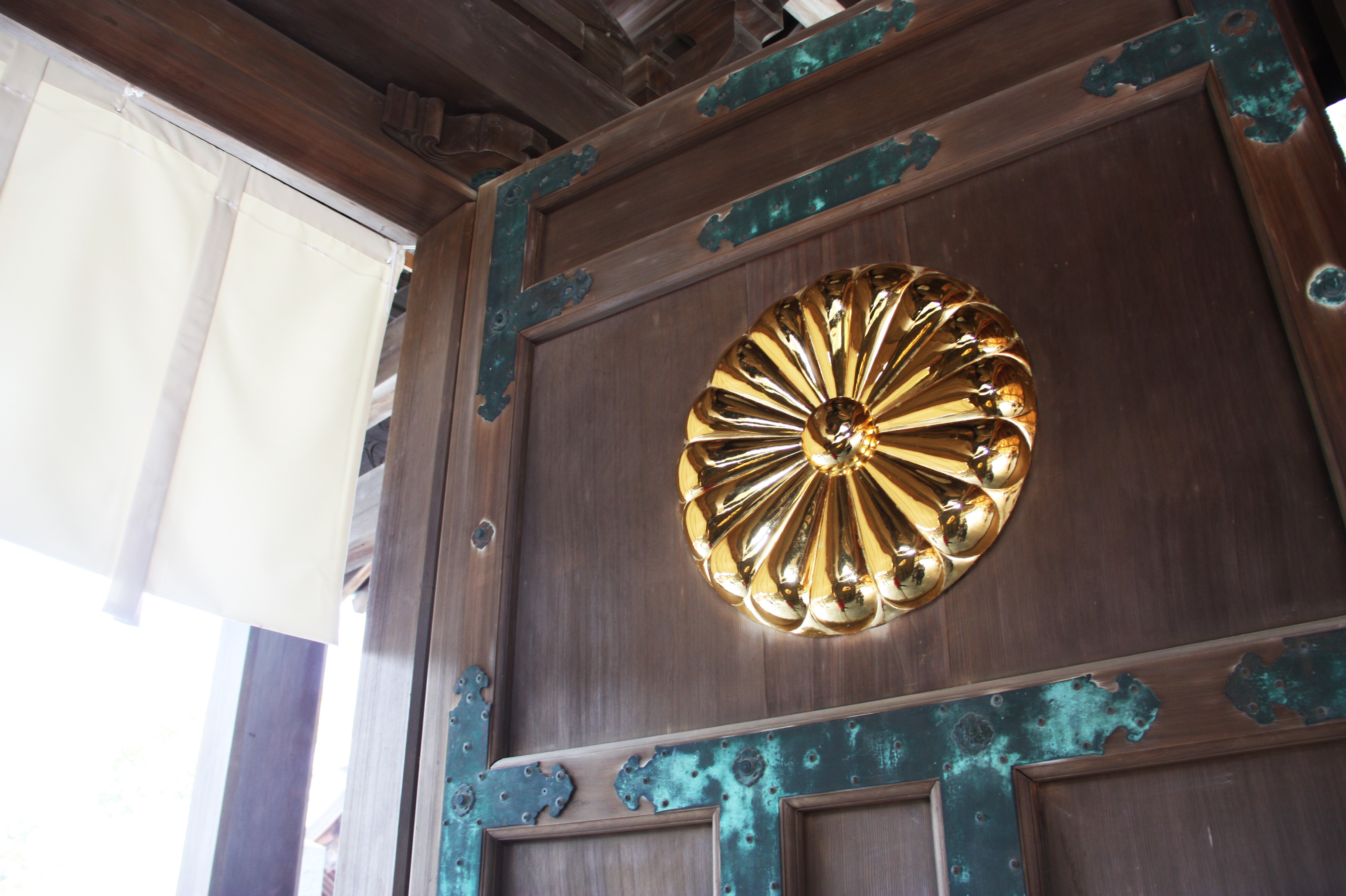 |
| Main Shrine of Hetsu-miya | Main Shrine of Hetsu-miya | Deities in Hetsu-miya |
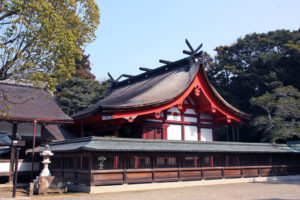 |
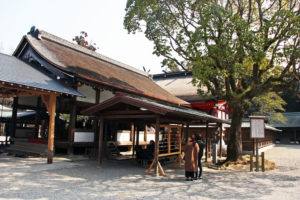 |
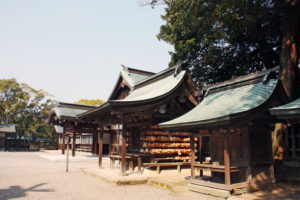 |
| 700 years old Oak Sacred tree | Oak Sacred tree | Oak Sacred tree |
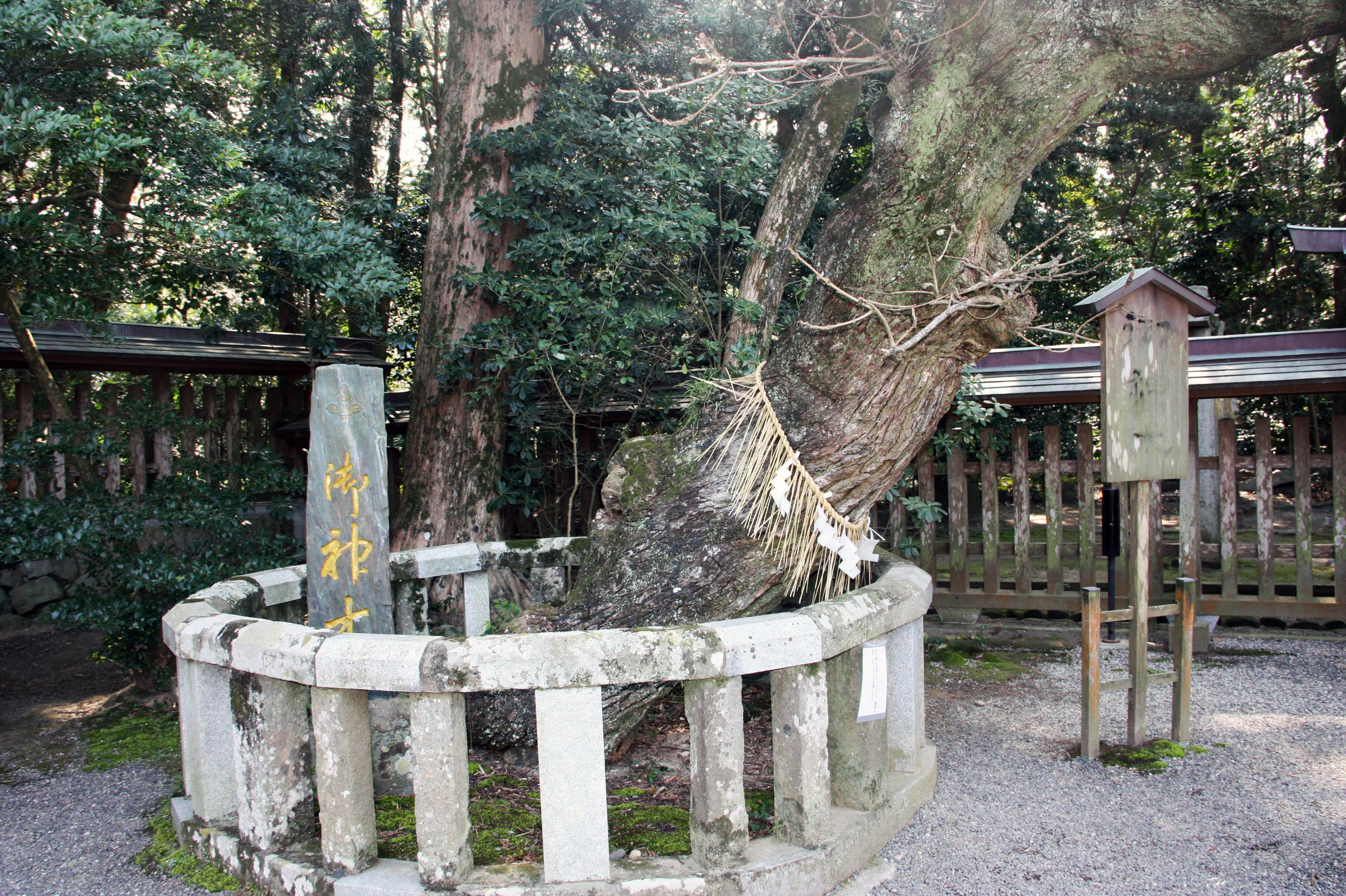 |
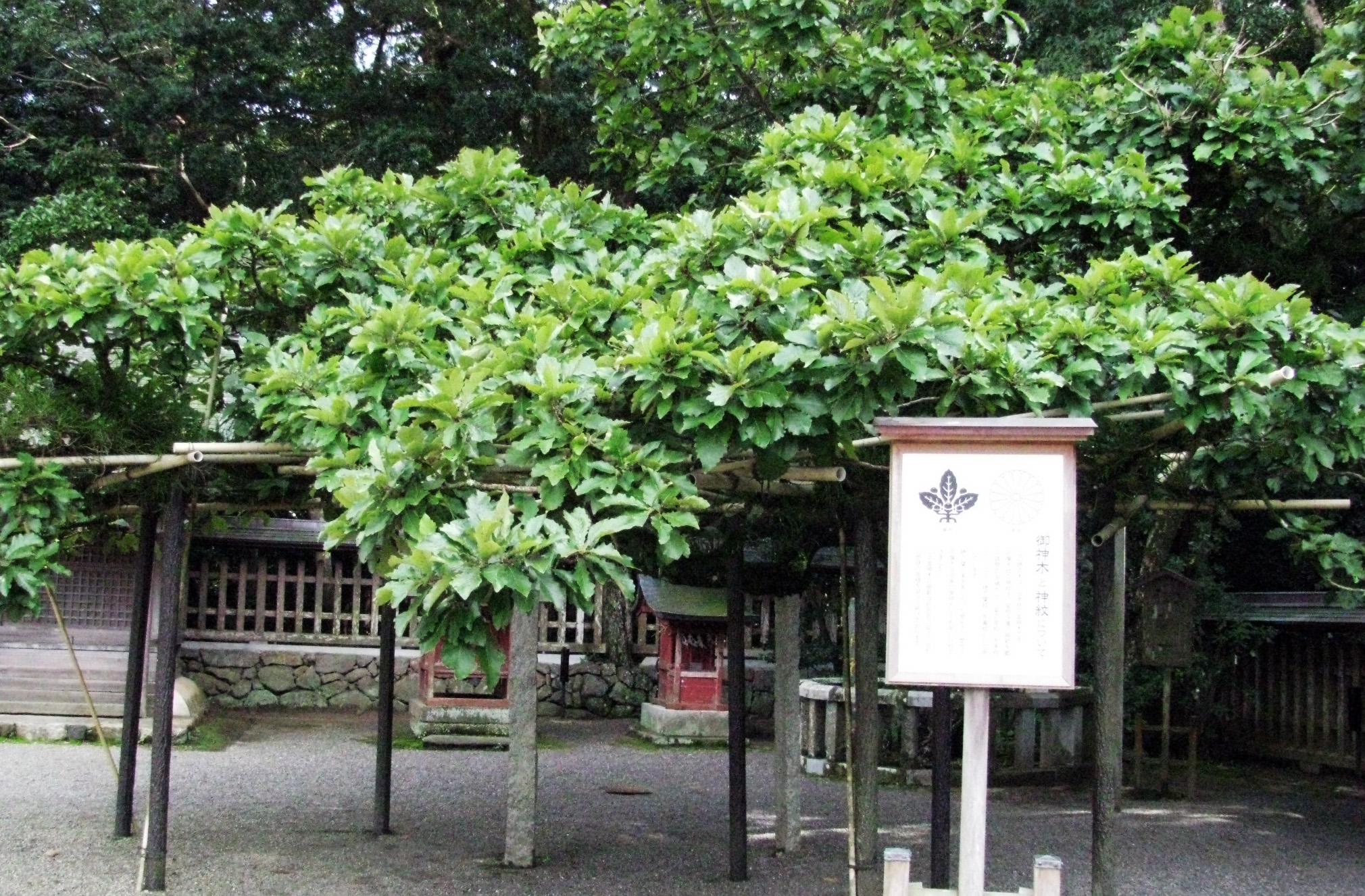 |
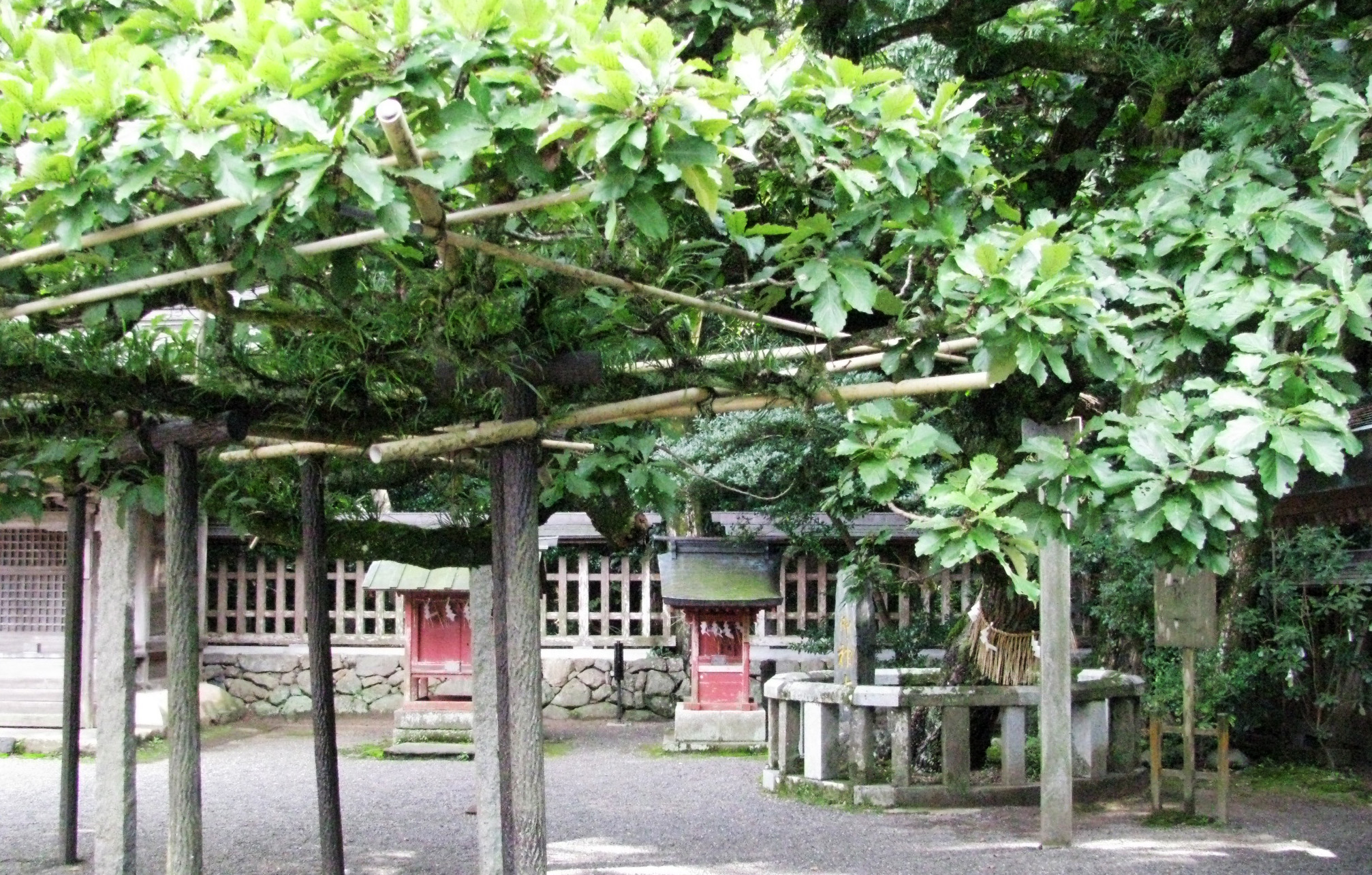 |
| Entrance of Takamiya Saijo |
Approach to Takamiya Saijo through sacred area |
Takamiya Saijo Japan’s oldest Ancient style Shrine |
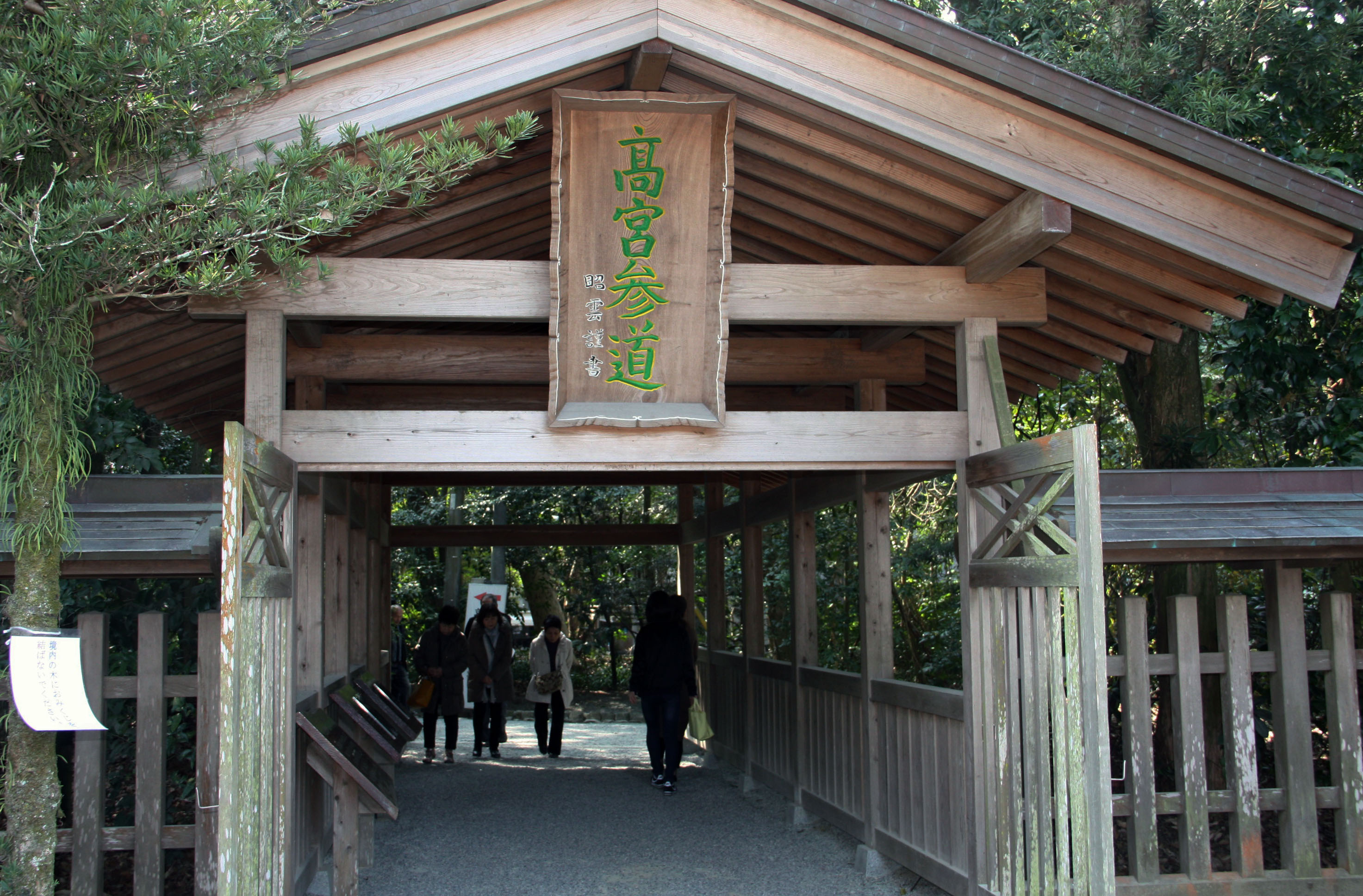 |
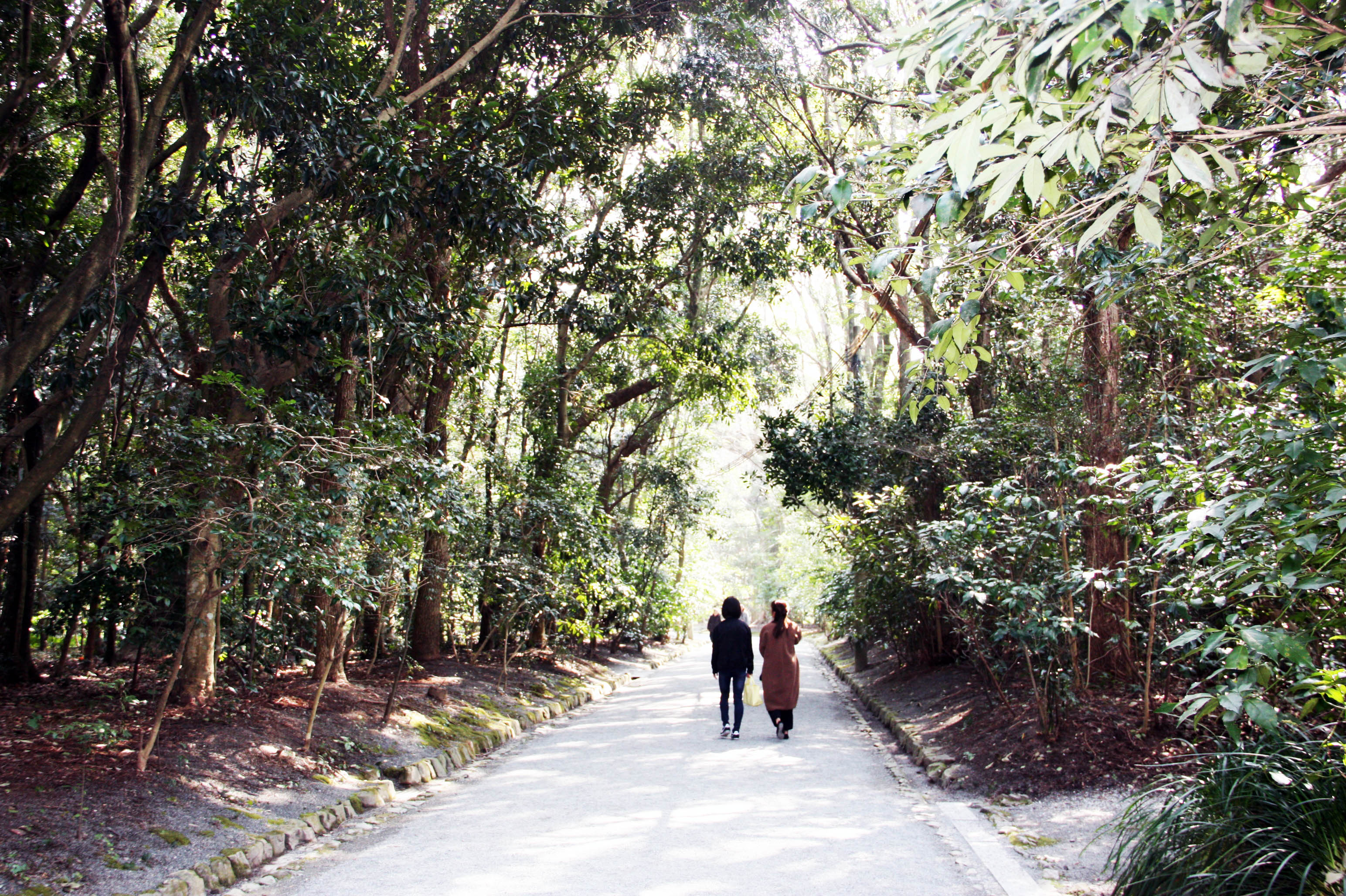 |
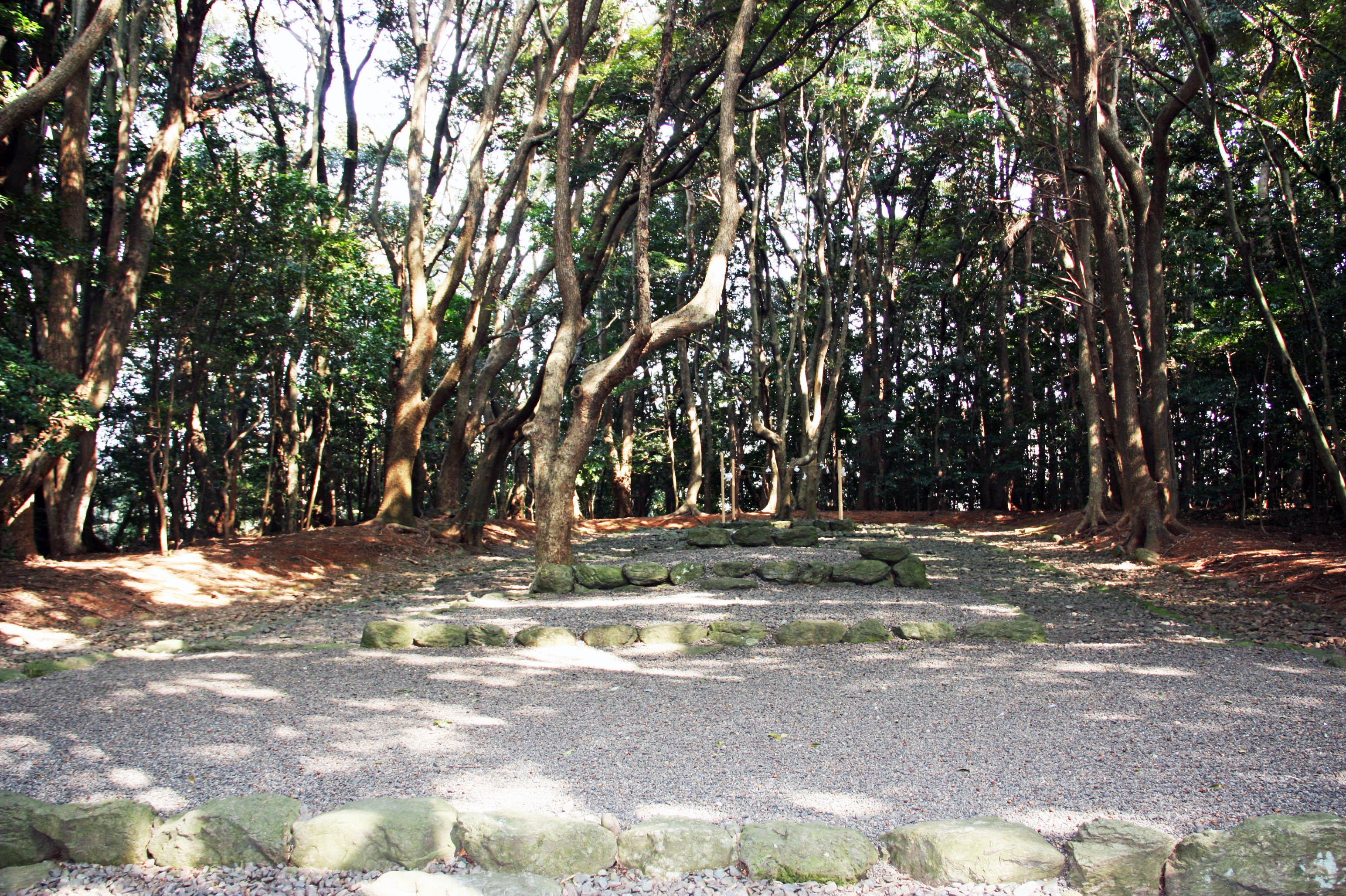 |
| Tenni-gu Shrine | Teisan-gu Shrine | Shinpokan Museum |
 |
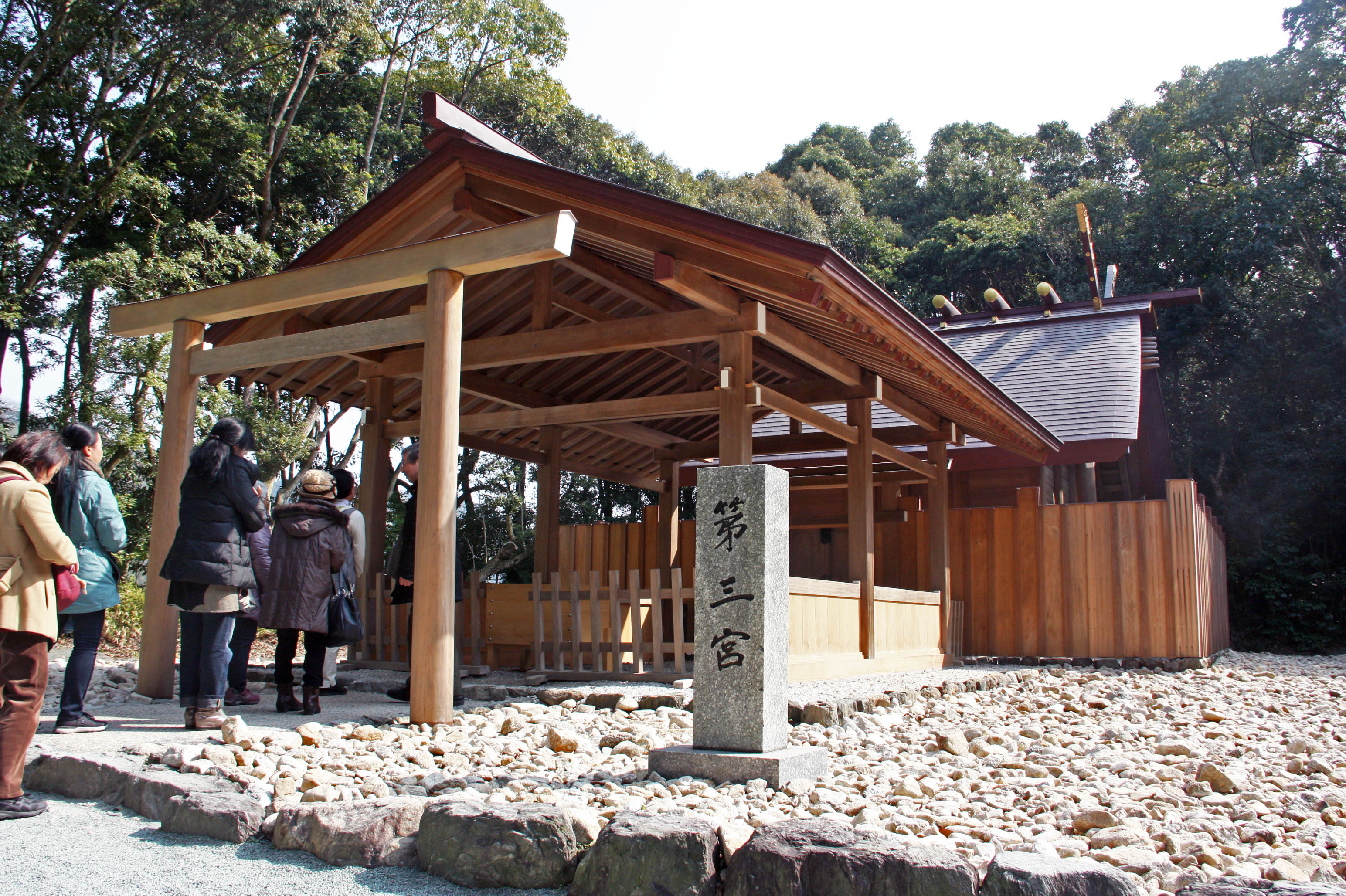 |
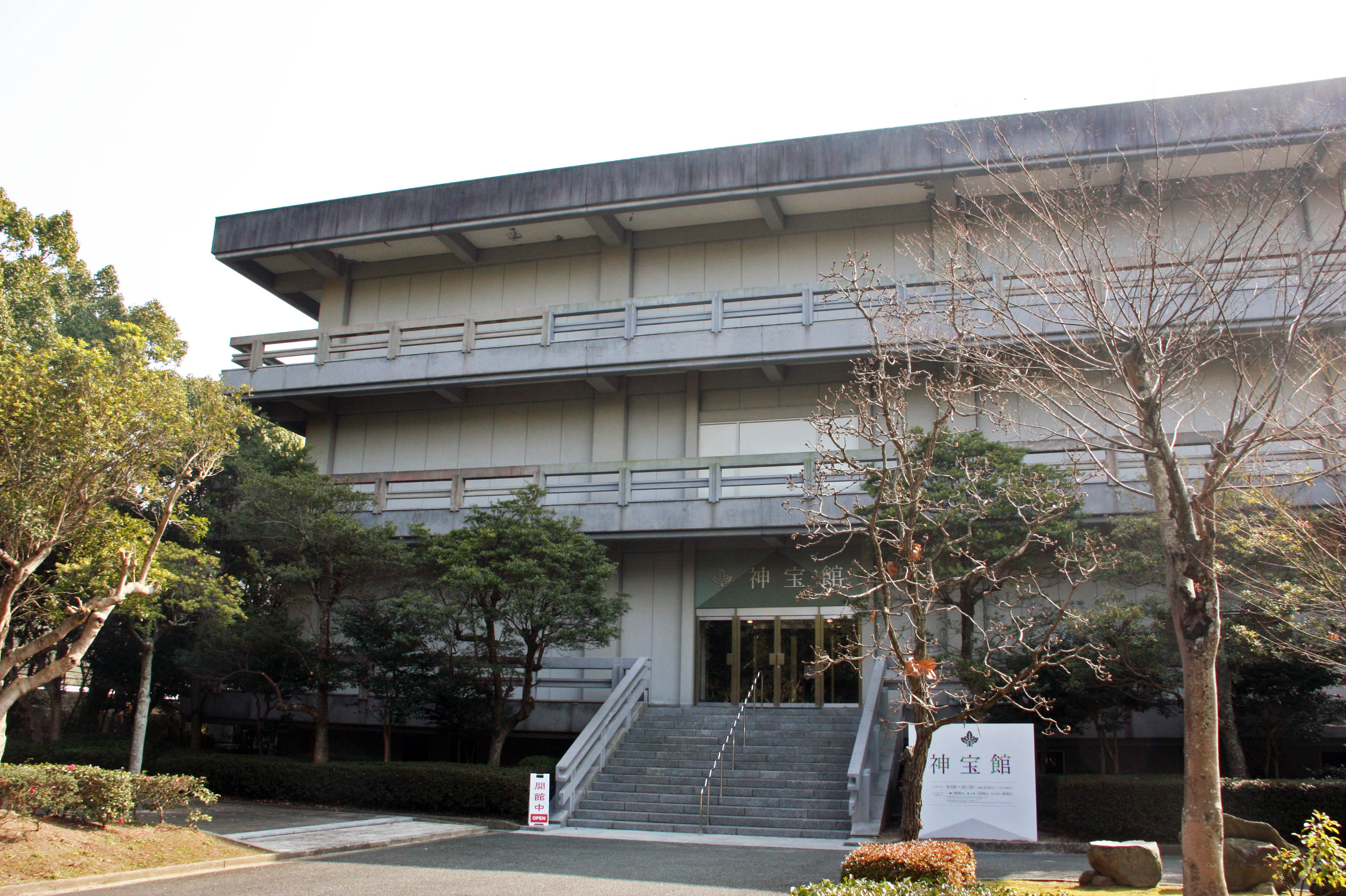 |
Munakata Taisha Shrine
Munakata Taisha is a part of World Heritage as Sacred Island of Okinoshima and
Associated Sites in the Munakata Region which has been registered in 2017.
Munakata Taisha is a collection of three Shinto shrines located in Munakata, Fukuoka Prefecture.
The Munakata-taisha consist of three shrines—Hetsu-miya, Nakatsu-miya and Okitsu-miya.
The shrines are devoted to the three Munakata goddesses. These kami are believed to be daughters
of the goddess Amaterasu, the ancestress of the imperial family.
The deities has also been worshipped there for many years as the god of mariners, and traffic
safety on land as well.
|
Munakata |
Nakatsu-miya Oshima Island |
Okitsu-miya Okinoshima Island |
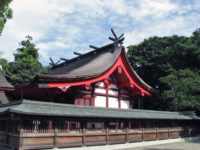 |
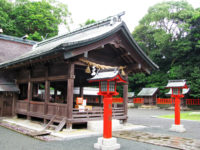 |
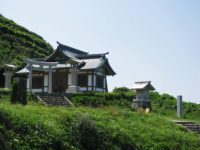 |
World Heritage
Sacred Island of Okinoshima and Associated Sites in the Munakata Region
The site has been registered on the World heritage in 2017,
and consist of the following.
・Shimbaru-Nuyama Mounded Tomb Group
About us Tailor-made tour Self-guided tour Golf tour Study tour Contact us
Kyushu Travel Guide Suggested itinerary Blog & local News About Japan 日本語
![]()
Site of Japan’s Meiji Industrial Revolution
The site has been registered on the World Heritage in 2015.
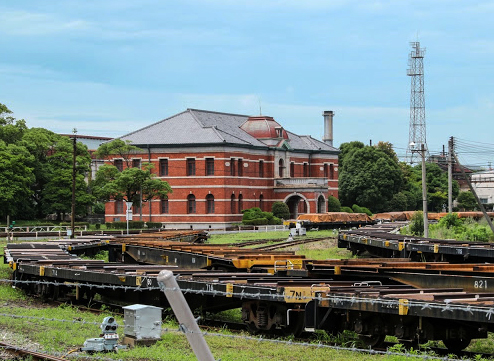 |
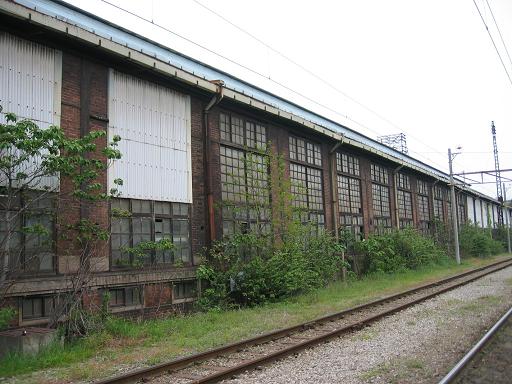 |
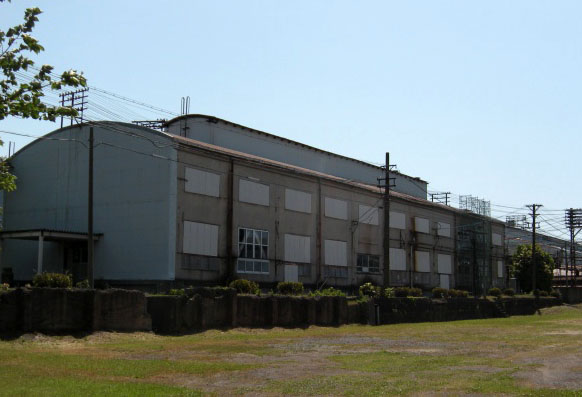 |
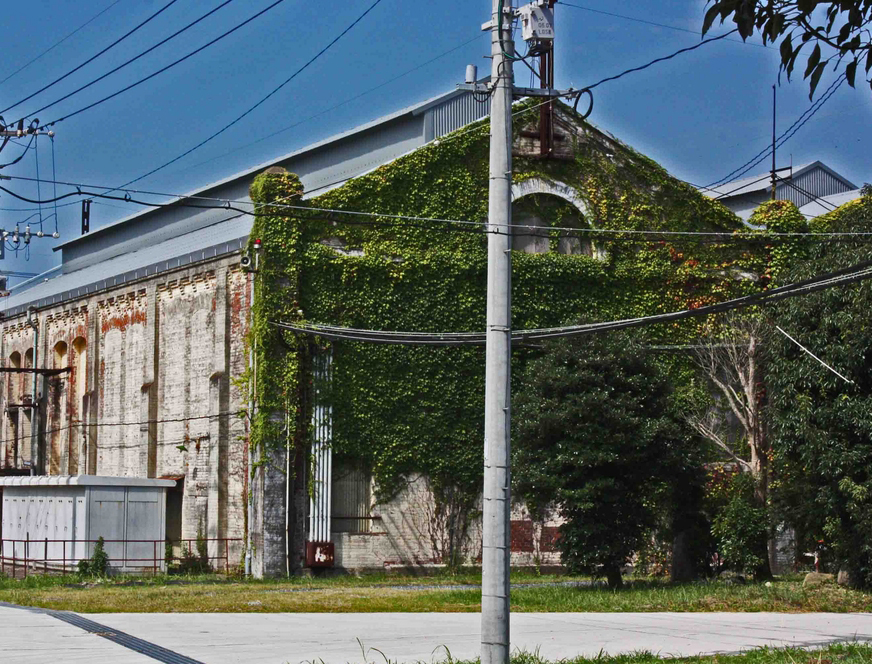 |
 |
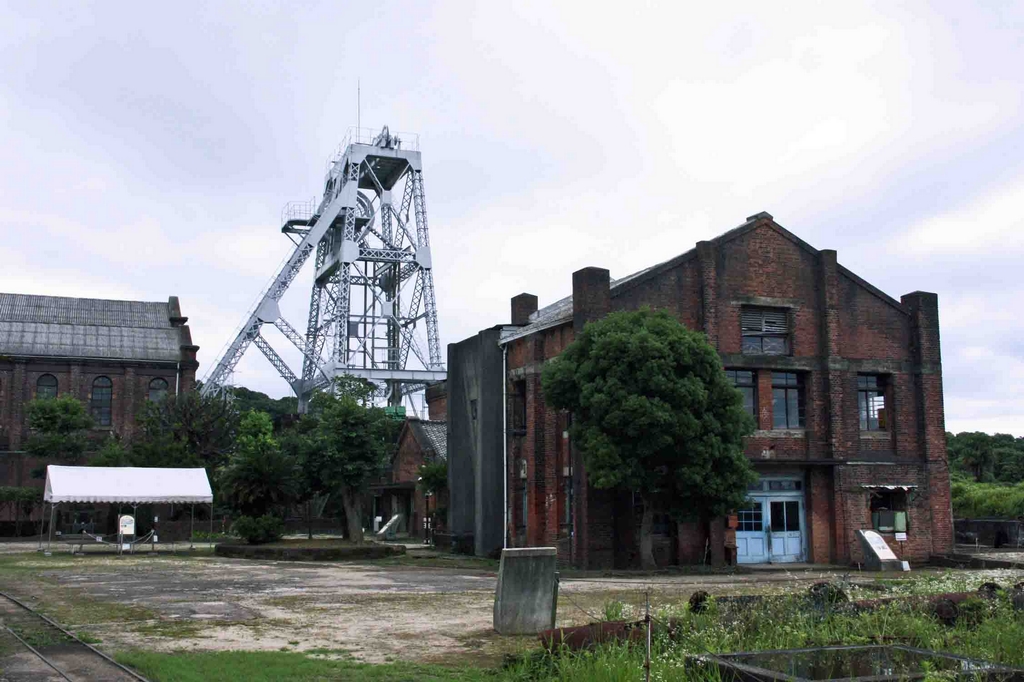 |
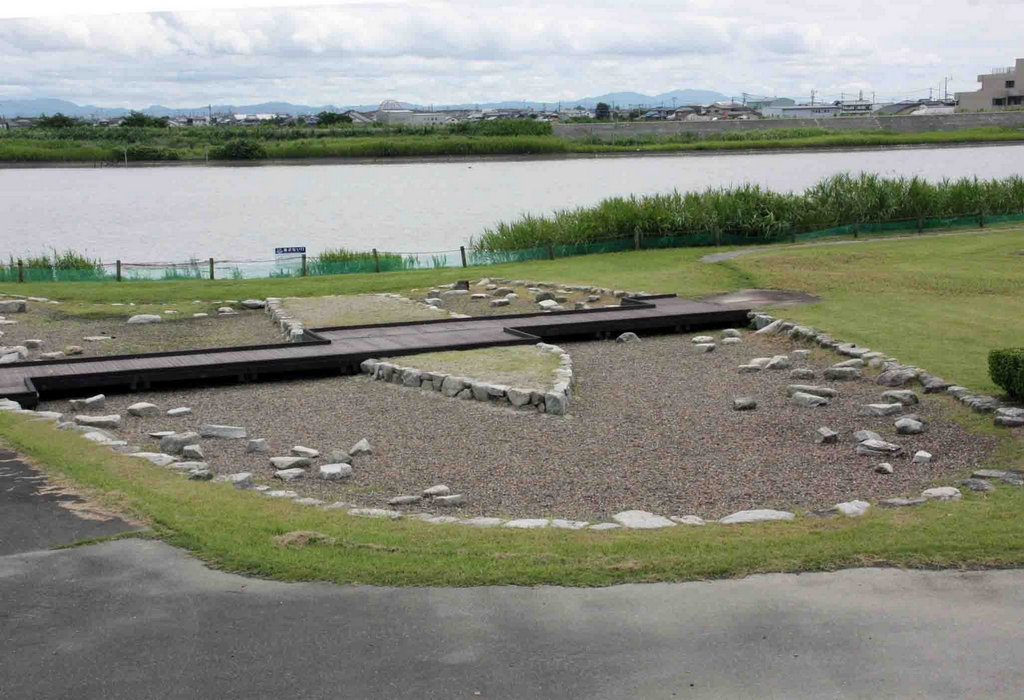 |
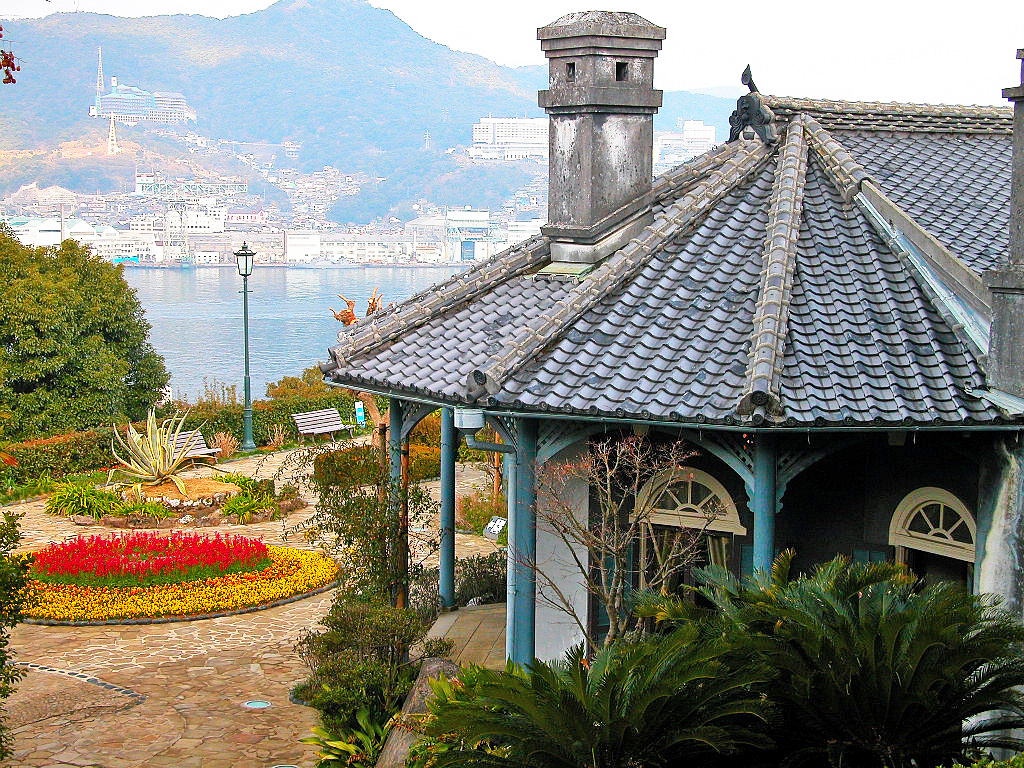 |
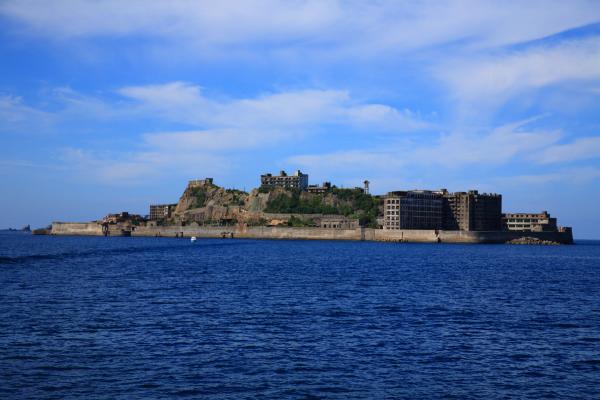 |
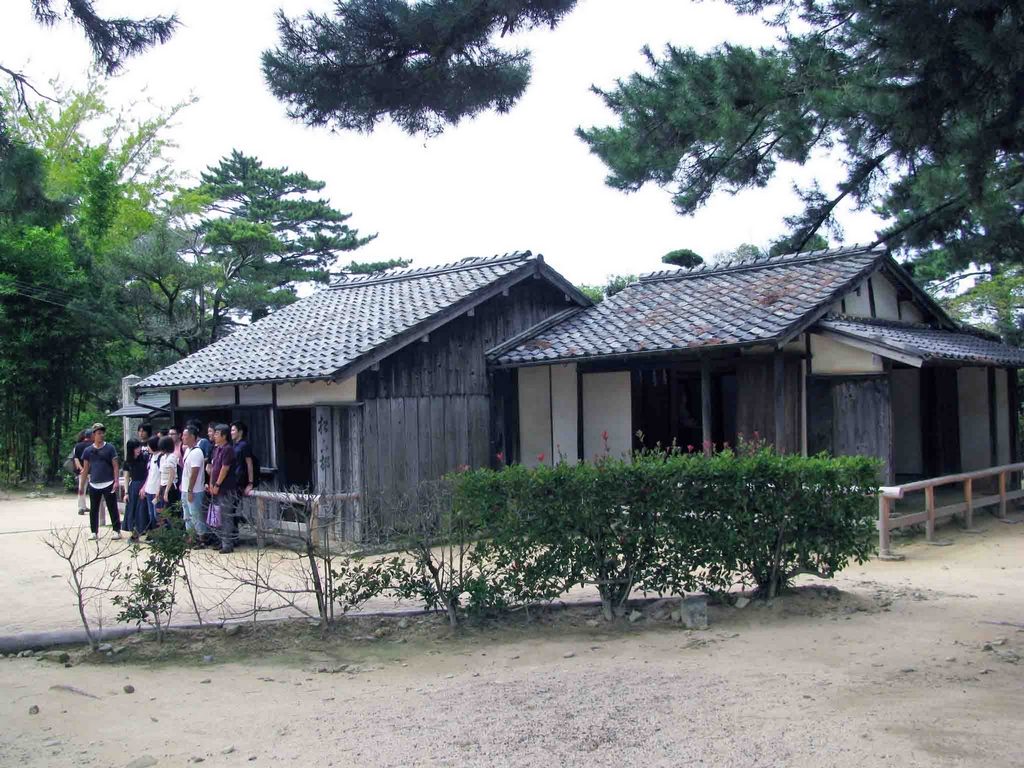 |
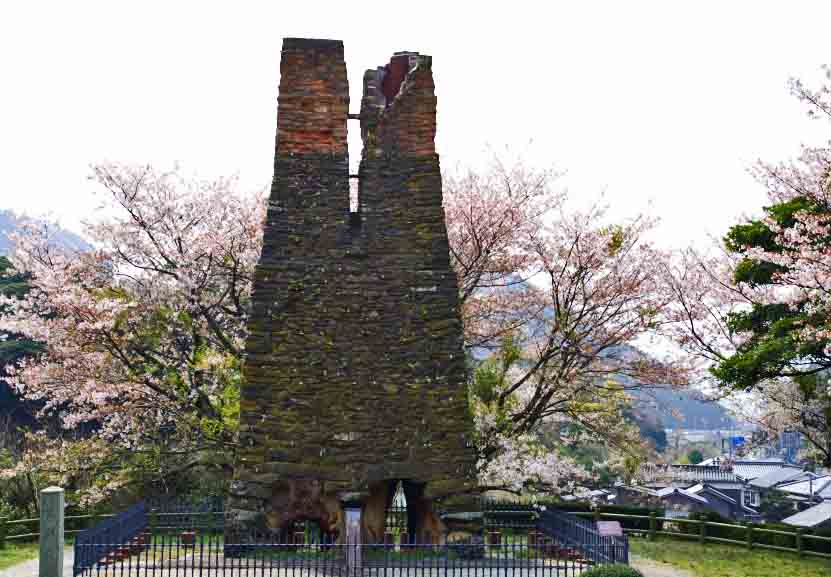 |
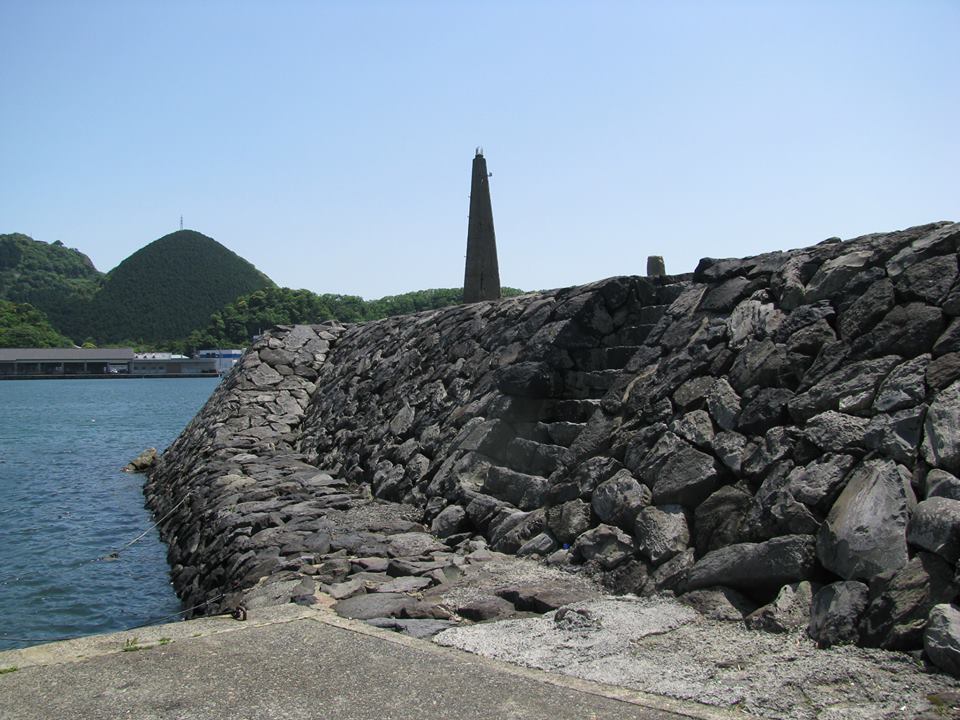 |

